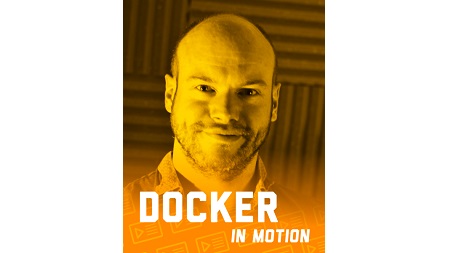
English | MP4 | AVC 1920×1080 | AAC 44KHz 2ch | 5h 19m | 1.48 GB
Docker in Motion teaches you how to create and manage container-hosted applications in Docker. With over 2 hours of hands-on, practical video lessons, you’ll learn the ins and outs of Docker and discover how to apply what you’ve learned to your own day-to-day development. Starting with an overview of Docker, you’ll dive into the commands and techniques you’ll need for running and managing containers, creating, modifying, saving and uploading Docker images from scratch, running and building multiple containers with Docker Compose, and more.
Inside:
- An introduction to Docker and how it works
- Image management
- Creating Docker images
- Managing containers
- Storing and managing data in volumes
- Linking your Docker containers
- Running a web server which is connected to a database
- Configuring containers using docker-compose
Docker creates sandboxed environments, called containers, that isolate your applications from the underlying infrastructure, making them much easier to deploy, migrate, scale, and remove. Each Docker container includes the application and all its dependencies in a single deployable package. Docker has rapidly become a nearly universal part of IT infrastructure in millions of Linux and cloud-based deployments worldwide, including big shops like eBay and Lyft. It’s time to join them!
Table of Contents
01 How to replicate and isolate individual projects
02 Virtual world vs. the container world
03 What should you put in a container
04 Container exercise 1
05 What is a microservice
06 What is the Docker Engine
07 Summary
08 Docker images versus Docker containers
09 How to pull Docker images
10 What is a Docker image layer
11 How to remove Docker images
12 Web development benefits of using Docker images
13 Summary
14 What is a Dockerfile
15 Dockerfile structure
16 Creating your first Dockerfile
17 Building your first Dockerfile
18 Getting your image history
19 Inspect your image
20 Dockerfile good practice
21 Dockerfile copying and adding
22 Dockerfile environmental variables
23 How to pass variables into the build
24 Summary
25 How to quickly remove unused images
26 How to tag your images
27 How to log in to a Docker registry
28 How to push a Docker image
29 How to pull images from the Docker Hub
30 How to update the remote images
31 Summary
32 How to create a container from an image
33 How to create a container from an inbuilt image
34 How to name a container
35 How to stop a container
36 How to start a container
37 How to restart a container
38 How to run a command against a container
39 How to get inside a container
40 How to adjust the working directory
41 How to adjust the user
42 How to run the web server
43 General security good practices
44 Summary
45 How to build an image with a database
46 How to run the database in a Docker container
47 How to run the database container
48 How to add data to the database
49 The problems with storing data
50 Summary
51 What are the storage options
52 How to make a bind mount
53 How to create a Docker volume
54 How to copy files into a container
55 How to list your volumes
56 How to remove a volume
57 How to share a volume amongst containers
58 Summary
59 The Docker Compose structure
60 How to run containers quickly
61 How to update all your images
62 How to remove all of your volumes
63 How to expose your database and webserver ports
Resolve the captcha to access the links!